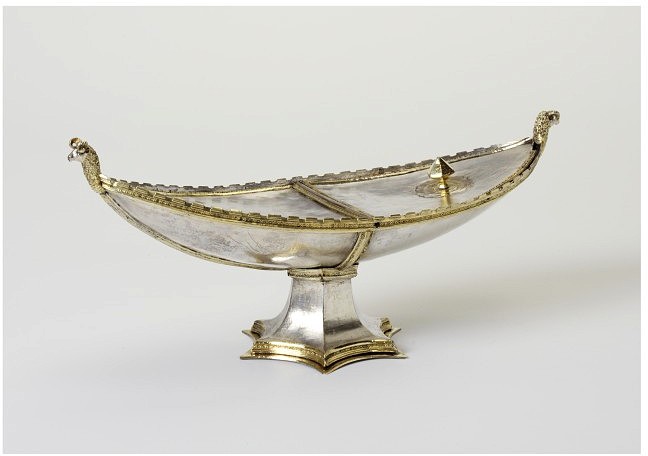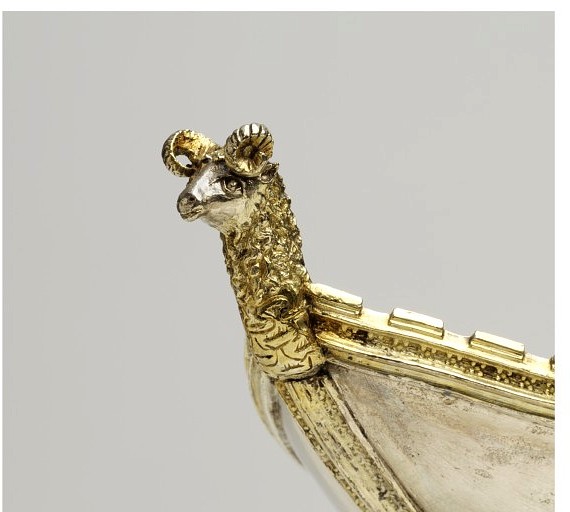Ramsey Abbey Incense Boat
 This is a photograph of the Abbey Incense Boat which also resides in the Victoria and Albert Museum.
This is a photograph of the Abbey Incense Boat which also resides in the Victoria and Albert Museum.
The Incense Boat
The boat forms one part of a liturgical set of which the other is the censer. Although they were found together, the two almost certainly were not made by the same workshop or as a pair. The grains of incense used in the censer were quickly consumed and had to be constantly replenished. The reserve was held in the boat from which the grains were extracted as required.
The Ramsey incense boat is made of silver and is only partly gilded, a device known as parcel(partial)-gilt. In shape it resembles a decked, double-ended boat eleven and a half inches long. The stem and stern posts have finials shaped as rams heads emerging from the sea. This is a punning allusion to the name of the Abbey, Ram-sey. It has a narrow, battlemented edge above the deck, which is formed in two halves, one fixed and the other hinged to act as a lid. Each half is decorated with a double (“Tudor”) rose and in the centre of that on the lid is a knob with which to lift it. The double rose device was in use as an emblem long before the Tudor dynasty made it familiar.
The boat is dated about twenty or thirty years later than the censer, about the middle of the fourteenth century. It is different in design, a reason for which may be explained by a change in the ceremonial associated with the celebration of the Mass. About 1350 it became the practice to lay the chalice on its side to drain into the paten. A round base such as that of the censer would have allowed the chalice to roll around. A base in the shape of a mullet (star) in plan was introduced to stop this happening. The boat has such a base. This not only indicates a later date for the boat but also suggests that it was originally made for a different set of liturgical vessels with this design innovation.
The importance of the boat and censer lies not only in their design and materials but also that they are the only such objects to survive from the English Gothic period with one, inferior, exception. It has been said of the Ramsey boat that, “it is probably the most graceful piece of fourteenth century plate in the world, the treasuries of Italy, Germany and France not excepted. (Ref 13)
Images © The V&A Museum all Rights Reserved

